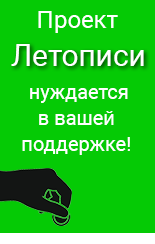NetLogo/Remix
Connected Modeling: Design and Analysis of the Modeling Commons
Constructionism, conceived and articulated by Seymour Papert, argues in favor of learning through the creation and sharing of meaningful artifacts (1980).
As a constructionist tool, NetLogo should foster not only the creation, but also the sharing, of models. However, NetLogo lacks built-in support for sharing or collaborating as part of the modeling process. Modeling is increasingly recognized as a collaborative effort (de Aennle, 2009), and while there is a strong online community of NetLogo modelers, analysis shows that most discussion in that community is about general modeling practices, rather than work on actual models.
Constructionism is not the only research tradition to suggest the importance of collaboration when modeling: Vygotsky (1978) argues that people achieve more when working with others than alone, describing the difference as the learner’s “zone of proximal development.” Schön offers multiple examples of “reflection-in-action,” describing how a veteran guides and trains a newcomer with probing questions (1983).
- Vygotsky + Engestrem
The idea that learning is social, rather than purely informational, is increasingly widespread among researchers, leading to such important learning paradigms as “cognitive apprenticeship” (Brown, Collins, & Duguid, 1989) and “communities of practice” (Wenger, 1998). The use of computers in general and the Internet in particular, as a means of facilitating collaborative work has been explored extensively in recent years by the CSCL (“computer-supported collaborative learning”) research community (Stahl, 2006; Koschmann, 1994
To further our understanding, we have created the “Modeling Commons,” a Web-based system for collaborative modeling. The Modeling Commons allows NetLogo users to store models, to associate one or more documents with a model, to label a model with “social tags” (Smith, 2008), to discuss a model with other users, or to share a model with some or all of the others on the system. It also allows for the collaborative development of a model, much as Wikipedia makes it possible to collaboratively edit a document. Users of the Modeling Commons are connected to one another through the artifacts that they create, as well as the groups to which they belong and the social tags that they apply. Models are also connected to one another, through the people who create and edit them, the social tags that group them, projects containing multiple models, and “variations” of similar models that represent variations on a common theme.
- This model does not have any ancestors.
- This model does not have any descendants.
